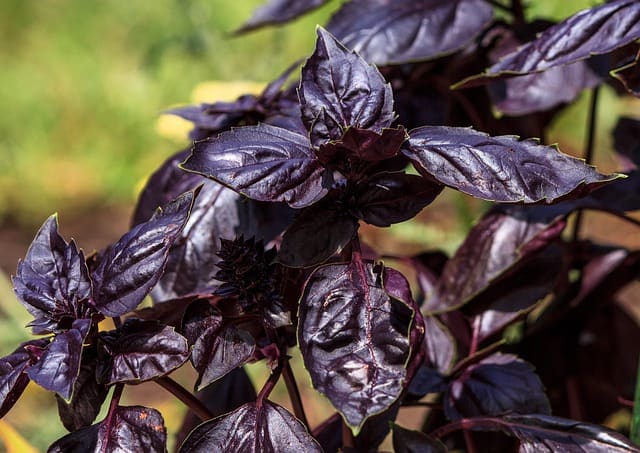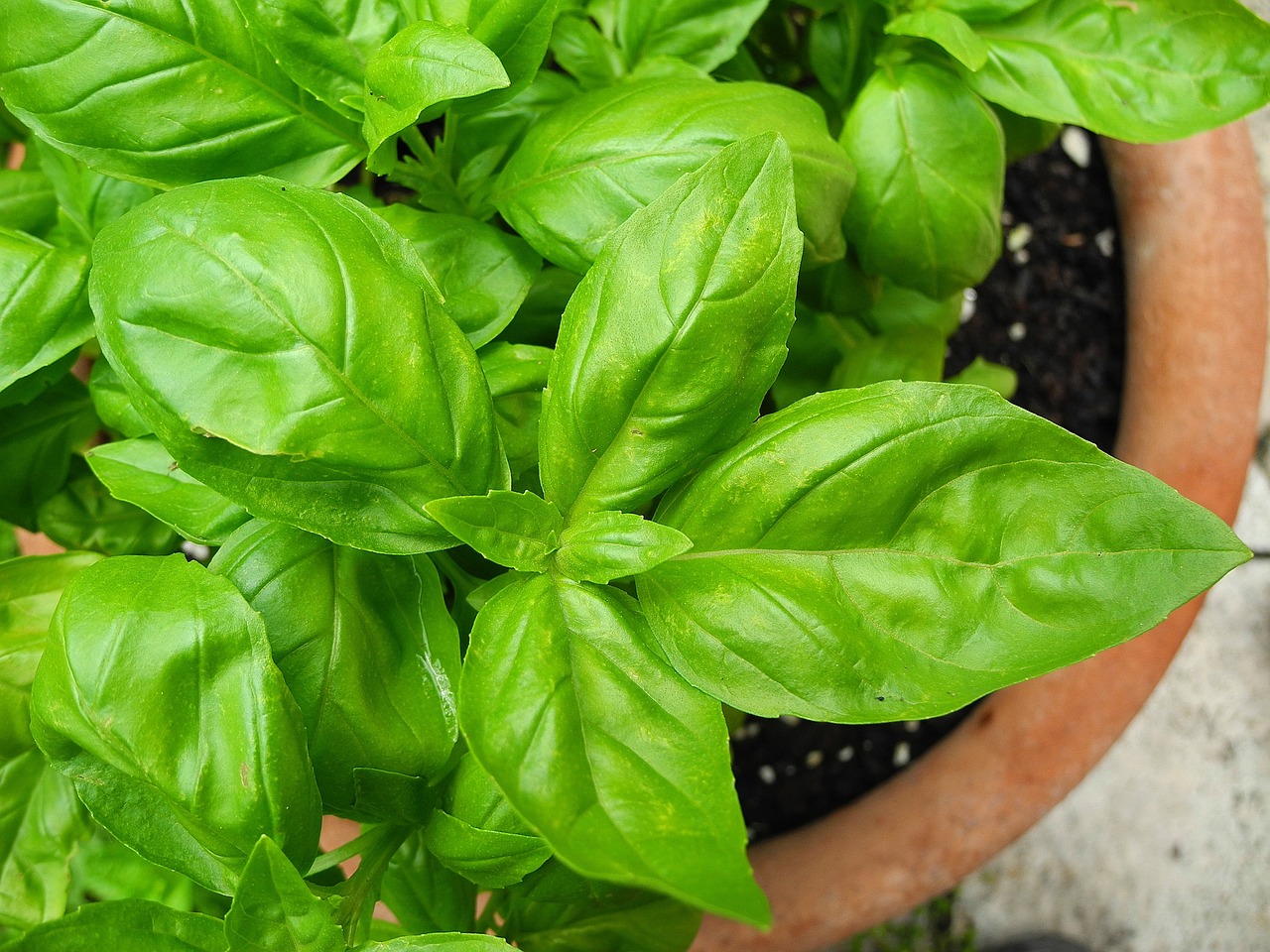In this guide, we’ll cover everything you need to know about propagating basil, from the best methods to tips for success.
Why Propagate Basil?

Propagating basil is a great way to expand your herb garden without spending a lot of money. Instead of buying new plants each season, you can create new plants from existing ones. This process not only saves you cash but also ensures you have a continuous supply of fresh basil for your cooking needs. Additionally, basil is relatively easy to propagate, making it an ideal choice for both beginners and experienced gardeners.
Choosing the Right Basil Variety

Before you start propagating, consider which type of basil you want to grow. Sweet basil is the most common variety used in cooking, especially in Italian dishes. Other types, such as Thai basil and purple basil, have unique flavors and appearances. Choose the variety that best suits your tastes and culinary needs.
Methods for Propagating Basil
There are two primary methods for propagating basil: stem cuttings and seed starting. Each method has its advantages, and your choice may depend on the resources available to you or your gardening preferences.
1. Propagating Basil from Stem Cuttings
This method is straightforward and usually yields quick results. Here’s how to do it:
Materials Needed:
A healthy basil plant
Clean, sharp scissors or pruning shears
A glass of water
A small pot with potting soil (optional, if you want to transfer the cutting directly into soil)
Steps:
Select a Healthy Stem: Look for a healthy basil plant and choose a stem that is at least 4-6 inches long with several leaves on it.
Make the Cut: Using your scissors, cut just below a leaf node. This is crucial as the leaf nodes contain the cells that will develop roots.
Remove Lower Leaves: Strip the leaves off the bottom half of the cutting while leaving a few leaves at the top intact. This helps the plant focus its energy on root development rather than sustaining leaves.
Place in Water: Submerge the cut end of the stem in a glass of water. Ensure that the leaf nodes are below the water’s surface.
Find the Right Spot: Place the glass in a warm, bright location, but out of direct sunlight to avoid overheating.
Change the Water: Change the water every few days to keep it fresh. In about 1-2 weeks, you should see roots developing from the cut end.
Transplanting: Once the roots are about 2-3 inches long, you can transplant the cutting into a small pot with soil. Water it well and continue to care for it as you would a regular basil plant.
2. Propagating Basil from Seeds
If you prefer starting from scratch, growing basil from seeds can be a fulfilling option. Here’s how to do it:
Materials Needed:
Basil seeds
Seed trays or small pots
Seed starting mix
A spray bottle with water (for misting)
Steps:
Prepare the Containers: Fill your seed trays or pots with seed starting mix. Ensure it’s moist but not soggy.
Plant the Seeds: Sow the basil seeds on the surface, covering them lightly with the soil mix. Basil seeds are small, so a light dusting is usually sufficient.
Water Gently: Use a spray bottle to mist the soil lightly. Avoid using a heavy stream of water that might dislodge the seeds.
Provide Warmth: Place the seed tray in a warm area, ideally between 70-80°F (21-27°C). You can cover the tray with plastic wrap or a humidity dome to retain moisture and warmth.
Keep Moist: Check daily and mist the soil as needed to keep it moist until seeds germinate. This typically takes 5-14 days.
Transplant Once Established: Once the seedlings have a few sets of true leaves, thin them out, leaving the strongest plants in each pot. You can then transplant them into larger pots or your garden when they’re about 3-4 inches tall.
Tips for Successful Propagation
Choose Healthy Plants: Always start with healthy basil plants to ensure strong cuttings or seedlings. Look for vibrant green leaves and avoid any signs of disease or pests.
Use Clean Tools: When taking cuttings, ensure your scissors are clean to prevent transmitting any disease to your plants.
Be Patient: Whether you’re propagating from cuttings or seeds, patience is essential. Basils can take time to establish roots or germinate, but the result will be worth the wait.
Provide Proper Light: Once your cuttings or seedlings are established, they need plenty of light to grow robustly. If you’re growing them indoors, consider placing them near a sunny window or using grow lights to ensure they receive adequate light.
Monitor Water and Nutrition: Keep the soil consistently moist, especially for seedlings. Once transplanted, basil thrives with regular watering, but avoid letting the soil become waterlogged. You can also feed your plants with a balanced, organic fertilizer every few weeks to encourage healthy growth.
Pruning for Bushier Growth: As your basil plants grow, pinch off the flower buds as they appear. This not only keeps the plant focused on growing more leaves but also prolongs the life of the plant since bolting (flowering) can cause the leaves to become bitter.
Consider Temperature: Basil loves warmth. Ensure that your plants are kept in temperatures between 70-85°F (21-29°C) for optimal growth. If you’re growing them outside, make sure to wait until all danger of frost has passed.
Avoid Overcrowding: When transplanting, give each basil plant enough space to grow. Overcrowding can lead to poor air circulation and can increase the risk of diseases.
Troubleshooting Common Issues
Even the best gardeners may encounter problems while propagating basil. Here are some common issues and how to solve them:
Wilting Cuttings: If your cuttings start to wilt, it may be a sign that they are not receiving enough moisture. Make sure the water is consistently changed, and consider adding a humidity dome or covering with plastic wrap to retain moisture.
Slow Growth: If your seedlings are growing slowly, they may not be receiving enough light. Consider moving them to a brighter location or supplementing with grow lights.
Pests: Keep an eye out for pests like aphids, whiteflies, or spider mites. If you spot any, remove them with a gentle spray of water or use insecticidal soap to keep your plants healthy.
Harvesting Your Basil
Once your basil is thriving, the fun part begins: harvesting! You can start snipping leaves once the plants are well-established, usually when they are about 6-8 inches tall. Always use clean scissors to cut the leaves and avoid taking more than one-third of the plant at once. This ensures that your basil continues to grow and produce leaves throughout the growing season.
Conclusion
Propagating basil is not only a practical way to expand your herb garden but also a fun and fulfilling activity. Whether you’re taking cuttings from existing plants or starting from seeds, the process requires minimal effort and provides maximum culinary rewards. With the right care and attention, you’ll soon have a thriving basil plant that adds flavor and freshness to your dishes.
So why wait? Start propagating your basil today and enjoy the satisfaction of growing your own herbs at home. Happy gardening!





